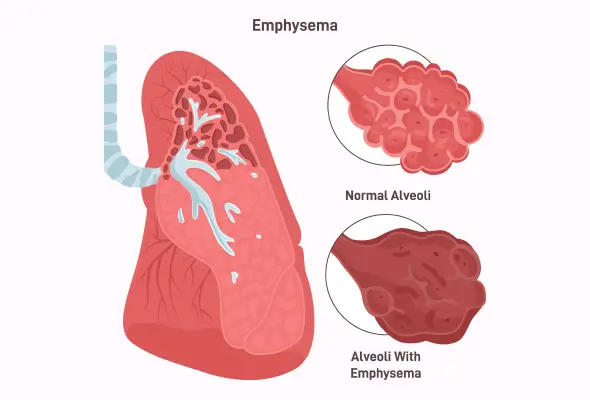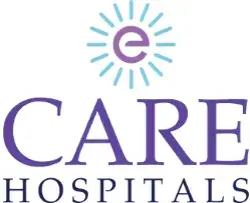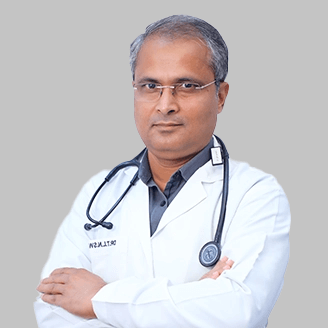-
Doctors
-
Specialities & Treatments
Centre of Excellence
Specialties
Treatments and Procedures
Hospitals & Directions HyderabadCARE Hospitals, Banjara Hills CARE Outpatient Centre, Banjara Hills CARE Hospitals, HITEC City CARE Hospitals, Nampally Gurunanak CARE Hospitals, Musheerabad CARE Hospitals Outpatient Centre, HITEC City CARE Hospitals, Malakpet
HyderabadCARE Hospitals, Banjara Hills CARE Outpatient Centre, Banjara Hills CARE Hospitals, HITEC City CARE Hospitals, Nampally Gurunanak CARE Hospitals, Musheerabad CARE Hospitals Outpatient Centre, HITEC City CARE Hospitals, Malakpet Raipur
Raipur
 Bhubaneswar
Bhubaneswar Visakhapatnam
Visakhapatnam
 Nagpur
Nagpur
 Indore
Indore
 Chh. Sambhajinagar
Chh. SambhajinagarClinics & Medical Centers
Book an AppointmentContact Us
Online Lab Reports
Book an Appointment
Consult Super-Specialist Doctors at CARE Hospitals

Emphysema
Symptom, Causes, Diagnosis and Treatment
Emphysema
Every breath becomes a struggle for millions of people living with emphysema disease, a serious lung condition that gradually damages the tiny air sacs in the lungs. While there is no cure for this progressive condition, proper understanding and management can help people with emphysema maintain a better quality of life. This article explores the essential aspects of emphysema disease, from recognising early warning signs to understanding treatment options that can help slow its progression.

What Is an Emphysema?
Emphysema is a progressive lung disease that fundamentally changes how the lungs work. It develops when the tiny air sacs in the lungs (alveoli) become damaged, leading to significant breathing difficulties. Air sacs are small, thin-walled structures in the lungs - when healthy, they're separate and elastic, but emphysema disease causes them to break down and merge into larger, less efficient spaces.
The disease affects the lungs in several crucial ways:
- Destroys walls between air sacs, creating larger, inefficient spaces
- Reduces the lung's ability to transfer oxygen to the bloodstream
- Traps old air in the lungs, leaving little room for fresh air
- Decreases the overall surface area of the lungs
- Makes breathing increasingly difficult over time
Emphysema or emphysematous lung disease is one of the chief types of Chronic Obstructive Pulmonary Disease (COPD), frequently occurring alongside chronic bronchitis. While chronic bronchitis affects the airways with inflammation and excess mucus production, emphysema specifically targets the air sacs. This combination creates significant challenges for breathing, as the lungs lose their natural elasticity and efficiency in processing air.
The damage caused by emphysematous lung disease is permanent, though treatments can help control emphysema disease symptoms and slow its progression.
Stages of Emphysema
Doctors use a standardised system called the Global Initiative for Chronic Obstructive Lung Disease (GOLD) to classify the progression of emphysema into four distinct stages:
- Stage 1 (Mild): Lung function remains at 80% or higher compared to healthy individuals of the same age and build.
- Stage 2 (Moderate): Lung function drops between 50% and 79%. Most people seek medical attention at this stage as they notice shortness of breath during physical activities.
- Stage 3 (Severe): Lung function decreases between 30% and 49%. Breathing difficulties become more pronounced, affecting daily activities.
- Stage 4 (Very Severe): Lung function falls below 30%. Patients experience significant breathing difficulties and may require oxygen therapy.
Symptoms of Emphysema
The primary symptoms include:
- Persistent shortness of breath, particularly during physical activity
- Frequent coughing or wheezing
- Increased mucus production with yellow or green colouration
- Chest tightness or pain
- A whistling sound while breathing
- Fatigue and trouble sleeping
As the condition progresses, patients may experience more severe manifestations. These include:
- Frequent respiratory infections, like colds and flu, which can significantly impact their quality of life
- Unexplained weight loss
- Weakness in lower muscles
- Swelling in the ankles and feet
Risk Factors of Causes of Emphysema Disease
The development of emphysema stems from various factors that damage lung tissue over time. Understanding these causes helps in prevention and early intervention strategies.
Tobacco smoke remains the leading cause of emphysema, with cigarette smoking accounting for more than half of all cases. The chemicals in tobacco smoke weaken the lungs' natural defences and destroy air sacs, leading to permanent damage.
Several significant risk factors contribute to the development of emphysema:
- Environmental Exposure: Long-term contact with air pollutants, including industrial fumes and vehicle exhaust
- Occupational Hazards: Exposure to dust and chemicals in mining, construction, and textile manufacturing
- Indoor Pollution: Fumes from heating fuel and poor ventilation, particularly in areas using indoor wood stoves
- Age Factor: Most tobacco-related cases develop between ages 40 and 60
- Genetic Predisposition: Alpha-1 antitrypsin deficiency, a rare inherited condition, can cause emphysema even without exposure to other risk factors.
Complications of Emphysema
The most significant complications include:
- Pneumonia Risk: People with emphysema have increased susceptibility to lung infections, particularly pneumonia, due to compromised lung defence mechanisms
- Collapsed Lung: Large air pockets called bullae can develop in the lungs, potentially bursting and causing lung collapse (pneumothorax)
- Heart Complications: The condition can lead to cor pulmonale, where the heart's right side enlarges and weakens due to increased pressure in lung arteries
- Systemic Effects: Patients often experience weight loss, muscle weakness, and swelling in their ankles and feet
Diagnosis
Medical History and Clinical Examination: Doctors conduct a thorough physical examination, listening to breathing sounds and looking for visible signs such as barrel chest or bluish lips. They also review the patient's medical history and smoking habits.
Several key diagnostic tests help confirm emphysema:
- Pulmonary Function Tests (PFTs): These measure lung capacity, airflow, and oxygen transfer efficiency
- High-resolution CT Scans: Provide detailed images of lung tissue and air sac damage
- Chest X-rays: Help identify advanced emphysema and rule out other conditions
- Arterial Blood Gas Test: Calculates oxygen and carbon dioxide levels in blood
- Complete Blood Count: Checks for infection and monitors red blood cell levels
- CT Scans: They prove particularly valuable as they can detect emphysema in its early stages, even before symptoms become noticeable.
Treatment
The main emphysema treatment approaches for emphysema include:
- Smoking Cessation Programs: The most crucial first step that can slow disease progression
- Medication Management: Bronchodilators and corticosteroids (oral or inhaled) to improve breathing
- Pulmonary Rehabilitation: Structured exercise and education programs
- Oxygen Therapy: Supplemental oxygen for advanced cases
- Surgical Interventions: Options like lung volume reduction surgery for severe cases
When to See a Doctor
Patients should contact their doctor if they experience:
- Increased difficulty breathing compared to the usual
- Changes in mucus colour to yellow or green
- More frequent use of prescribed medications
- Reduced effectiveness of current medications
- Increased coughing episodes
- Sleep disturbances due to breathing problems
- Unexplained decrease in energy levels
Immediate medical attention is necessary if patients experience:
- Severe shortness of breath that prevents climbing stairs
- Blue or grey discolouration of lips or fingernails
- Mental confusion or decreased alertness
- Inability to speak complete sentences due to breathlessness
Prevention
The most effective prevention strategies include:
- Smoking Prevention and Cessation:
- Avoid starting smoking
- Quit smoking with professional help
- Join support groups for better success rates
- Use prescribed medications and nicotine replacement therapy
- Environmental Protection:
- Avoid exposure to secondhand smoke
- Test homes for radon
- Wear protective equipment when working with chemicals
- Minimise exposure to air pollution and industrial fumes
- Health Maintenance:
- Get regular vaccinations against flu and pneumonia
- Maintain regular physical activity
- Follow appropriate dietary advice
- Seek prompt treatment for respiratory infections
Conclusion
Medical science continues to advance in understanding and treating emphysema. Through proper management strategies, support from doctors, and preventive measures, people with emphysema can lead active, healthy lives while keeping their symptoms under control. The combination of medical treatment, lifestyle changes, and regular monitoring offers the best path forward for anyone affected by this condition.
FAQs
1. Who does emphysema affect?
Emphysema most commonly affects men between the ages of 50 and 70. However, the condition can develop in anyone, including women and younger adults, at any age (as early as 40). Smokers face the highest risk, though non-smokers can also develop the condition through environmental exposure or genetic factors.
2. How common is emphysema?
Emphysema is one of the most common lung diseases. Higher rates occur among:
- Non-Hispanic white individuals
- Men compared to women
- Adults aged 65 and older
3. Can lungs recover from emphysema?
The damage caused by emphysema is permanent and irreversible. While lungs cannot heal from emphysema, proper treatment and lifestyle changes can help:
- Slow disease progression
- Improve breathing capacity
- Enhance the quality of life
- Reduce symptom severity
4. What is a good home remedy for emphysema?
Several home-based strategies can help manage emphysema symptoms effectively:
- Regular breathing exercises
- Maintaining proper nutrition
- Staying physically active within limitations
- Practising stress management techniques
5. What is the difference between emphysema and COPD?
Emphysema is actually a type of COPD (Chronic Obstructive Pulmonary Disease). COPD serves as an umbrella term that includes both emphysema and chronic bronchitis. While all people with emphysema have COPD, not everyone with COPD has emphysema. The conditions share similar causes and treatments but affect different parts of the lung structure.
Still Have a Question?




